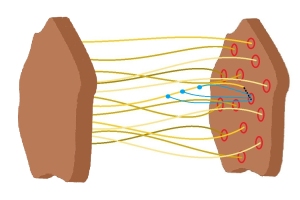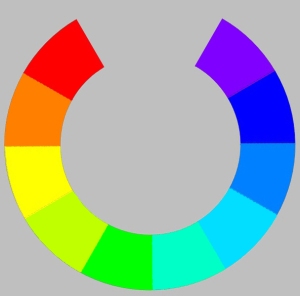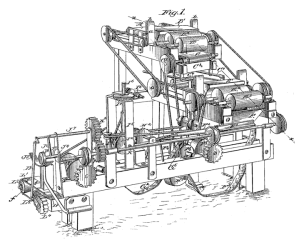Like many science and science fiction fans, I have speculated about the possibility of building a computer that is as intelligent as a person. This idea, of course, raises contentions about what intelligence is and how it might be measured. In 1950 a gentleman named Alan Turing devised something called the Turing Test. In the Turing Test, a computer is subjected to questions from humans in an attempt to distinguish it from a human. If the questioners are not able to make the distinction, the computer is said to have passed the test.
This test has an obvious problem. This is exhibited by Ray Kurzweil’s imagined intelligent program called Ramona in his film The Singularity is Near. In the film, Ramona tends to give away that she is a computer by giving answers that are too intelligent and too precise. Nevertheless, I consider the test to be essentially valid. I must add that the computer’s ability to pass the Turing Test is only evidence of its intelligence. The test does not prove that it is “aware” in the same sense as a human. A computer could mimic human intelligence in every way without being conscious.
When I was a child, the usual argument for why a computer could not be as intelligent as a human was that it would have to be too large. Typically, someone who wanted to refute the possibility of computer intelligence would say something like, “A computer big enough to do what a human brain does would stretch from L.A. to New York and would have so many vacuum tubes that no one could possibly change them fast enough.” Of course, none of the people who made this argument anticipated the printed circuit and the miniaturization of electronic components. Transistors were already extant, but the people who repeated this bromide didn’t actually give much thought to what they were saying. In their defense, information about these things was not immediately available in the manner of today’s Internet. Their information probably came from some magazine or newspaper article they had read years earlier.
It is now estimated that personal computers will have the logical capacity of the human brain by 2030. That is 17 years from the writing of this entry.

However, it is not necessarily the case that computers will require that much logical capacity to match human intelligence. Computers are designed with an eye on optimal efficiency. The human brain, on the other hand, is the end product of a long and winding evolutionary process. Consider other aspects of the human body such as the human eye. If it had been designed from scratch, it probably would not have an inverted retina, and there would be no necessity of a blind spot.
Many arguments have been published that explain in detail why sufficient computing power should also facilitate the building of a computer that is as intelligent as a person. A good book on the subject is The Singularity is Near by Ray Kurzweil. However, I have a much simpler argument. We already have in our possession a model of a computer that is as intelligent as a person. It is called the human brain. Unless we attribute magical properties to the human brain, there is no reason to believe that we could not reverse engineer it. Those who are familiar with my ideas about consciousness may argue that I do attribute magical powers to the human brain. However, the powers I attribute to it are quite restricted and well defined. I have every reason to believe there are ways to compensate for the properties contributed to the human brain by human consciousness.
For the duration of this discussion, I will adopt a convention used in discussions of machine intelligence. Typically machine intelligence that rivals that of a human is called Artificial General Intelligence, abbreviated AGI. This must be distinguished from Strong Intelligence, which is not merely as intelligent as a person, but is also conscious. I strongly suspect that a conscious machine would be far more difficult to build than an intelligent machine, perhaps prohibitively difficult.
Once we accept the possibility of AGI, we run up against a conundrum. What would these machines do? How would they be utilized? The obvious answer to this question is that they would be set to work doing what human engineers have always done. They would build better, stronger, and faster machines. More specifically, they would be put to work designing and building more intelligent computers.
Now, imagine an army of intelligent engineers working day and night without rest on the single task of building an intelligence greater than themselves. Not only would they have the perfect memory and persistence of a computer, they would have our working knowledge of human level intelligence. There can be little doubt that a computer more intelligent than a typical person is possible; geniuses are a well documented phenomenon. The greatest possible intelligence that is achievable is certainly unknown, but it seems likely that it would greatly exceed human intelligence.
If these engineers were successful, they could set their creations to work building even more intelligent machines. This would lead to a feedback loop in which computer intelligence, AGI, would rapidly become so advanced that it would be difficult or impossible for a person to anticipate its next move. The point where this happens is called the Technological Singularity.
I first thought of this idea when I was about 25. At that time, I did not realize anyone else was thinking along the same lines. I referred to this phenomenon in my private journals as Threshold Technology and abbreviated it T2. When I reached the age of 37, I discovered that the idea had been popularized by a writer named Vernor Vinge in a paper entitled “What is the Singularity”. At the time of this writing, there are countless people, most of them with good technical backgrounds, who consider the Singularity to be a near certainty.
I must digress at this point to a discussion of theology.
At first, it may seem like the idea of the Singularity conflicts with most ideas of theology. After all, how could something like the book of Revelation in the Bible come to pass if human civilization is swept away in an orgy of ever-increasing AGI. I am of the opinion that there is no contradiction.
One of the things predicted by many religions is that there will be an end time when the world is either perfected or abandoned. The world’s human inhabitants will then advance to a more harmonious relationship with God. In my opinion, the Singularity and these predictions are one and the same. I view the Singularity as a kind of birthing process. When a woman gives birth, she pushes the baby out. However, there is typically a midwife or doctor that is simultaneously pulling the baby out. I view the Singularity as a process wherein technology acts as the mother pushing humanity closer to God. Simultaneously, God acts as the doctor pulling humanity closer to him. In other words, the Singularity is part of the means by which God will perfect our universe.
Some Christians might object to this view, arguing that God does not need human help to bring about his objectives. However, this is shortsighted. In Biblical accounts of God’s interactions with humans, he nearly always acts through the medium of human endeavor. God did not scoop the Israelites up and drop them in the Promised Land. He converted Moses and set Moses to work on Pharaoh.
Also, God seems to be incapable of interacting directly with the space that humans inhabit. There is a tendency to think this implies some limitation on God’s power. However, the limitation seems to be more logical than structural. As indicated in earlier entries, God went to a lot of trouble to create a universe that is not under his direct control and where free will is possible. It appears that God cannot interact directly with our universe, because to do so would break down the indeterminacy that makes free will possible. For this reason, I think of the universe as being somewhat like a model ship in a bottle. The maker of the model has to work through a small opening to erect the ship while not violating the container:

Another analogy might be a terrarium that’s seal cannot be broken. The plants grow and take form only via what is contained in the terrarium and what light is able to penetrate the glass.
Still another analogy might be a pressure mold. When plastic is molded in a pressure mold, it must be allowed to fill in all the spaces and cool. Once it has filled in all the spaces and cooled, the mold can be removed and a perfect part is revealed.
In my discussion of predestination, I explain that the Universe seems to have an objective, and I explain in some detail how this objective is being accomplished. In my opinion, the Singularity is part of the path that leads to this ultimate objective. Therefore, I see the Singularity as the last act in God’s plan to perfect the universe and humanity. Exactly what the end result of this perfecting process will be remains to be seen. I may discuss this in later entries.
In the mean time, I give you this frightfully hubristic interpretation of the Bible:
The Gospel According to Spikosauropod

1 In the beginning God created the heaven and the earth.
2 And the earth was without form, and void; and darkness was upon the face of the deep.
And the Spirit of God moved upon the face of the waters.
3 And God said, Let there be light: and there was light.
(the Big Bang)
4 And God saw the light, that it was good: and God divided the light from the darkness.
(the universe becomes transparent through the liberation of photons)
5 And God called the light Day, and the darkness he called Night. And the evening and the morning were the first day.
6 And God said, Let there be a firmament in the midst of the waters, and let it divide the waters from the waters.
7 And God made the firmament, and divided the waters which were under the firmament from the waters which were above the firmament: and it was so.
(condensation of matter)
8 And God called the firmament Heaven. And the evening and the morning were the second day.
9 And God said, Let the waters under the heaven be gathered together unto one place, and let the dry land appear: and it was so.
(the formation of the planets and the earth)
10 And God called the dry land Earth; and the gathering together of the waters called he Seas: and God saw that it was good.
11 And God said, Let the earth bring forth grass, the herb yielding seed, and the fruit tree yielding fruit after his kind, whose seed is in itself, upon the earth: and it was so.
(plant life forms)
12 And the earth brought forth grass, and herb yielding seed after his kind, and the tree yielding fruit, whose seed was in itself, after his kind: and God saw that it was good.
13 And the evening and the morning were the third day.
14 And God said, Let there be lights in the firmament of the heaven to divide the day from the night; and let them be for signs, and for seasons, and for days, and years:
15 And let them be for lights in the firmament of the heaven to give light upon the earth: and it was so.
16 And God made two great lights; the greater light to rule the day, and the lesser light to rule the night: he made the stars also.
17 And God set them in the firmament of the heaven to give light upon the earth,
18 And to rule over the day and over the night, and to divide the light from the darkness: and God saw that it was good.
(Genesis 1:14-18 is the one part of the chronology that is difficult to account for. Possibly it does not mean what it seems to, or possibly the chroniclers got it wrong. One possible interpretation is that the Sun and Moon were previously obscured by overcast skies. Note that I do not subscribe to Biblical inerrancy.)
19 And the evening and the morning were the fourth day.
20 And God said, Let the waters bring forth abundantly the moving creature that hath life, and fowl that may fly above the earth in the open firmament of heaven.
(animal life forms)
21 And God created great whales, and every living creature that moveth, which the waters brought forth abundantly, after their kind, and every winged fowl after his kind: and God saw that it was good.
22 And God blessed them, saying, Be fruitful, and multiply, and fill the waters in the seas, and let fowl multiply in the earth.
23 And the evening and the morning were the fifth day.
24 And God said, Let the earth bring forth the living creature after his kind, cattle, and creeping thing, and beast of the earth after his kind: and it was so.
25 And God made the beast of the earth after his kind, and cattle after their kind, and every thing that creepeth upon the earth after his kind: and God saw that it was good.
26 And God said, Let us make man in our image, after our likeness: and let them have dominion over the fish of the sea, and over the fowl of the air, and over the cattle, and over all the earth, and over every creeping thing that creepeth upon the earth.
(the evolution of man)
27 So God created man in his own image, in the image of God created he him; male and female created he them.
28 And God blessed them, and God said unto them, Be fruitful, and multiply, and replenish the earth, and subdue it: and have dominion over the fish of the sea, and over the fowl of the air, and over every living thing that moveth upon the earth.
(the agricultural revolution)
Genesis 3 through the rest of the Old Testament
(history happens; lessons are learned)
Mark through Jude
(Jesus, a theoretical perfect man, is sacrificed symbolically so that people would have a way to let go of their primordial guilt;
Jesus teaches us to be better people;
the teachings of Jesus culminate in charity, liberty, equality, arguably even environmentalism)
Revelation 1-20
(Technological Singularity: God works through human endeavor to fulfill prophecy)
Revelation 21-22
(post Singularity paradise; a means is discovered to resurrect the dead)

























